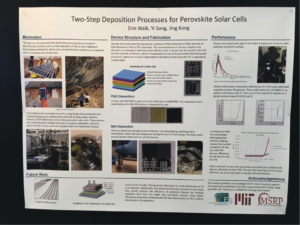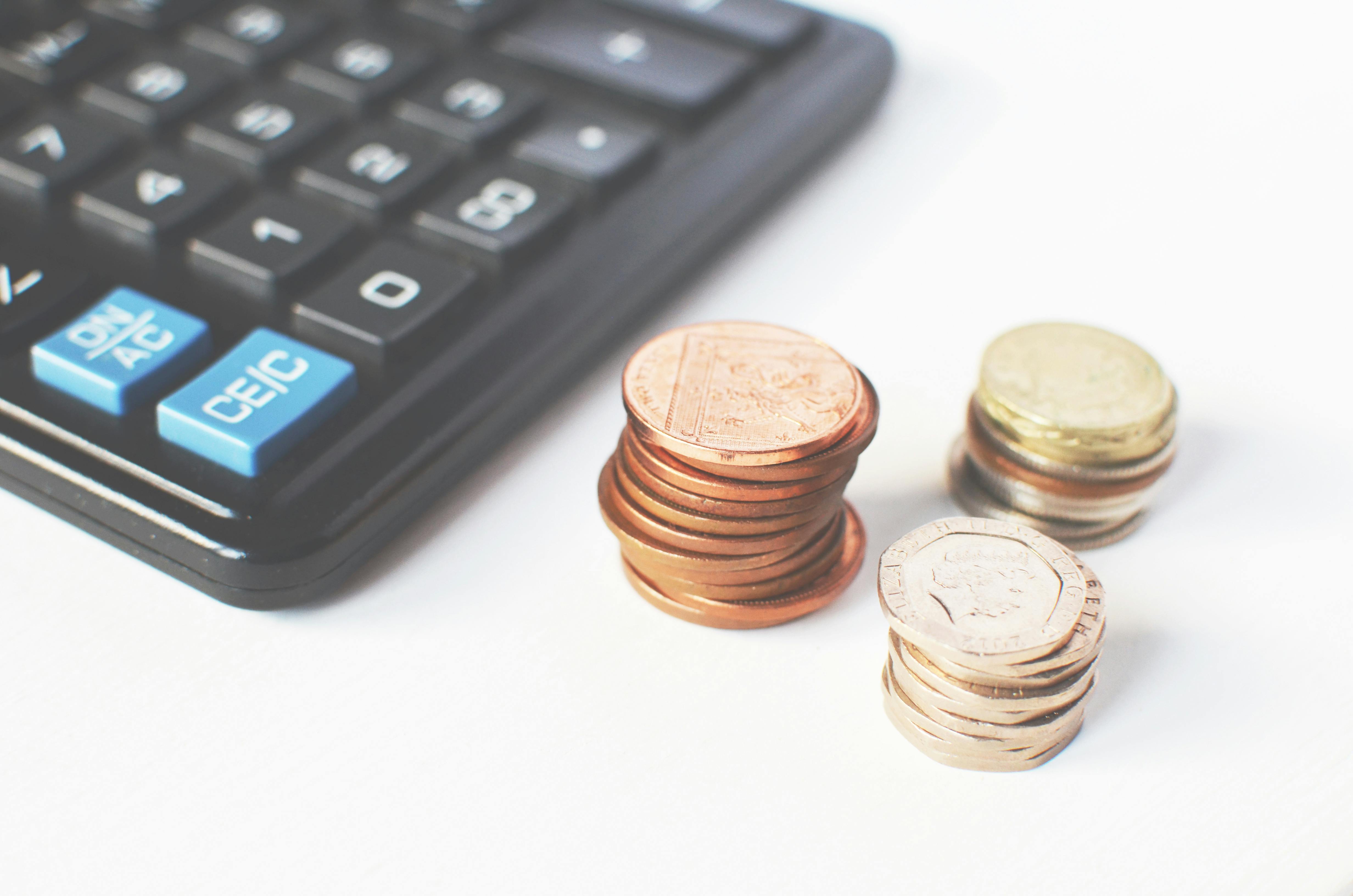All posts by niaja
August 4th, 2016
today was a very successful day as we started with the MSRP session which lasted till lunch time. The MSRP poster board presentation was a very educative session which created a base for interaction between the trekkers and various researchers. Their research presentations gave me an insight on the scope for any research project and the planning that goes into the achievement of the desired result. The really sparked my interest was a research project that dealt with the modification of solar cells for cheaper and more efficient production using Aluminium as cathode and ITO as anode.
We also went through a discussion and developmental session which helped us to better analyse our research topic and assign various sub-units that each person will be working on over the school year. We also started looking up our various sectors and looking into the materials that will be needed, the materials we will be making ourselves, the average user population, the price range of the final product etc. At the end of the day, we were able to talk with Kelvin who I really appreciate for taking his time at the airport to talk to us. He gave us a scenario asking the factors for investment in a business plan, the amount of unit product the company will be making and the factors to consider to increase the number of consumers. This question’s really got us thinking about how our product can be produced and put into the industry for investment. I would recommend this question to help other trekkers think about technological consultation and financing before creating a product.

- 13 Dec, 16
- by niaja
- in Newsletter
-
 0
0
-

 0
0

What is your major?
I major in civil engineering at the illustrious Morgan State University.
How did you get interested in STEM?
My college career is rooted in STEM, because I am always focused on solving problems! Growing up, I was intrigued by how products were developed, and STEM is the brainchild of the future in which we are heading.
How did you find out about i-Trek?
I found out about i-Trek from Christopher Gaines, my former Calculus professor and a colleague of Niaja.
What have been doing since participating in i-Trek?
After the trek, I interned in Los Angeles where I worked on an earthquake-engineering project. This involved assessing the spatial correlation of tall reinforced concrete buildings and ground motions.
What do you enjoy doing in your spare time?
I enjoy soccer and taking trips.
What is something you are really looking forward to?
I look forward to using my degree to change the world and visiting one country on each continent.
Would you recommend the i-Trek program to current undergraduate students? Why or why not?
I-Trek is one of the most useful programs of which I have ever been a part. From networking with students, faculty, and CEOs, all participants benefit from the diversity of thought and obtain great insight into the different paths to take after graduating college. As a team, we also built strong bonds with people from all over the country, which is essential in building out a contact base for professional networking.
What skill are you most proud of possessing?
I am most proud of, and thankful for, my intellectual creativity. It is what keeps me up at 3AM writing in my “idea book.”
Where do you see yourself in 10 years?
In 10 years, I definitely see myself out of graduate school and working on my goal of creating a company that forms a healthy coalition between business and engineering.
- 26 Jan, 16
- by niaja
- in Newsletter
-
 0
0
-

 0
0
By: Niaja Farve
 The most common justification given to STEM students for pursuing a graduate degree is the promise of a “free” education. Rarely is there an explanation for why this is the case and how it works. Is simply being accepted and registering for a program enough? While the large majority of STEM students never pay out of pocket for their graduate degrees, they do work for them. Graduate school is generally available without out-of-pocket tuition expenses because you, as a graduate student, are now a researcher. In return for the knowledge you create through your research, your advisor, department or institution takes care of your academic fees. Therefore, as a graduate student you are employed by the school — you now have a full time job! However, it is not your only job. You are a still a student expected to fulfil certain academic requirements prior to receiving your degree. So yes, your graduate diploma may not cost you money, but it will not simply be handed to you.
The most common justification given to STEM students for pursuing a graduate degree is the promise of a “free” education. Rarely is there an explanation for why this is the case and how it works. Is simply being accepted and registering for a program enough? While the large majority of STEM students never pay out of pocket for their graduate degrees, they do work for them. Graduate school is generally available without out-of-pocket tuition expenses because you, as a graduate student, are now a researcher. In return for the knowledge you create through your research, your advisor, department or institution takes care of your academic fees. Therefore, as a graduate student you are employed by the school — you now have a full time job! However, it is not your only job. You are a still a student expected to fulfil certain academic requirements prior to receiving your degree. So yes, your graduate diploma may not cost you money, but it will not simply be handed to you.
There are several ways to achieve a debt-free graduate experience — each has its pros and cons. The following options are specific to STEM graduate programs.
Research Assistantship (RA)
The majority of your academic fees are paid for by serving as a research assistant. This is the default title for a graduate student conducting research. Most research institutions will require you perform research every semester, regardless if that is how you plan to pay for your semester. To obtain an RA appointment, you typically need to seek out a professor with funding for an open research position that you would fill. Therefore, although you may be in love with a lab and the research they do, if the professor does not have funding, you cannot hold an appointment with that lab unless you have your own way of paying for your academic expenses.
Fellowship
A fellowship is the ideal way to pay for graduate school. Fellowships are comparable to scholarships. They are given based on merit, although applications will ask about your research experience. Fellowships allow you to have more control over where you do your research. You are essentially a free student to a professor. If they have the time and resources for you, there is not much incentive for them to turn you away. The only caveat is that fellowships come in varying amounts. Therefore, you will need to make sure you understand how much funding the fellowship provides and for how long.
Teaching Assistantship (TA)
A teaching assistantship is exactly what it sounds like: an appointment for a semester where you help teach a course. Most programs will generally require you to hold an appointment for at least one semester. While serving as a TA, you are still expected to progress with your first job (research) and depending on your schedule, your own courses. Therefore, a TA position typically functions as a third job that you have to balance.
Grants
Grants are funding specifically for a research project. A graduate student would most likely only apply for a grant with an advisor that will serve as the primary investigator. This route is generally only pursued once you have joined a lab and have a clear project. Since it is given based on a set research proposal, a grants limits the flexibility of your research.
Loans
Last but not least, loans. Loans are an extreme effort taken in very rare cases.
 Each STEM graduate program is different and has varying funding methods for students. While most programs leave it to the student to decide how they will find funding, some programs take care of everything as soon as you are accepted. This article is meant to help inform you about the options that exist. Make sure to know all the facts before making a decision on where you want to earn (and pay for!) your graduate degree.
Each STEM graduate program is different and has varying funding methods for students. While most programs leave it to the student to decide how they will find funding, some programs take care of everything as soon as you are accepted. This article is meant to help inform you about the options that exist. Make sure to know all the facts before making a decision on where you want to earn (and pay for!) your graduate degree.
- 24 Jan, 16
- by niaja
- in Newsletter
-
 0
0
-

 0
0
Once upon a time, the single-serve, freshly-made cup of ‘designer’ coffee was only available from a barista. But now all of these mainstream coffee blends can be found right inside our very own kitchen cupboard thanks to the Keurig K-cups. Since they were made famous in 1997, K-cups have slowly become the preferred way America wants to enjoy its coffee. With each pod, a single serve can instantly be brewed without worrying about cleanup or making too much, or even about it ever tasting ‘bad’.
 This seemingly perfect invention does have one major stipulation. The plastic used to create the K-cup must be able to resist high temperatures (such as those that come from being in contact with boiling water). Because of this, the plastic of K-cups is made to be virtually unreactive and therefore when it is thrown into a landfill, it causes major harm to the environment. It takes a longer time than most materials to degrade, and has become a major concern to environmentalists. John Sylvan, the original founder of the K-cup, revealed his bleak outlook to The Atlantic online newsletter in a recent interview. “No matter what they say about recycling, those things will never be recyclable.” It bothers him so much that he doesn’t own a Keurig machine. He sarcastically made the remark, “it’s like a cigarette for coffee…a single-serve delivery mechanism for an addictive substance.”
This seemingly perfect invention does have one major stipulation. The plastic used to create the K-cup must be able to resist high temperatures (such as those that come from being in contact with boiling water). Because of this, the plastic of K-cups is made to be virtually unreactive and therefore when it is thrown into a landfill, it causes major harm to the environment. It takes a longer time than most materials to degrade, and has become a major concern to environmentalists. John Sylvan, the original founder of the K-cup, revealed his bleak outlook to The Atlantic online newsletter in a recent interview. “No matter what they say about recycling, those things will never be recyclable.” It bothers him so much that he doesn’t own a Keurig machine. He sarcastically made the remark, “it’s like a cigarette for coffee…a single-serve delivery mechanism for an addictive substance.”
The plastic used to make the pods is a special #7 type plastic arranged in 4 combined layers designed to keep the coffee inside safe and dry. It is such a specific type of plastic that only a handful of cities are able to recycle it, and even they are finding it hard to do so with the large volumes of pods coming into the facilities each day. As reported in the The Atlantic, “the best estimates say the Keurig pods buried in 2014 would actually circle the Earth not 10.5 times, but more than 12”.
 Even with all the unfavorable aspects of the pods, people seem very committed to their daily K-cup coffee fix. James Ewell in Business Insider explains that “People want convenience, even if it’s not sustainable.” A typical Keurig machine costs about $100 and the pods have an average cost of $0.65 to $0.75 each. If this same customer were to get his coffee twice a day from the local coffee joint, he would expect to spend between $7 and $10. In less than 2 months, this consumer will have paid for the machine and be drinking each subsequent cup of coffee for less than a dollar. With the economical benefits and the convenience of having the machine nearby, the environmental harm each pod creates is being carelessly overlooked. These thrifty K cup users seem to forget that undegraded K-cup plastic can end up in farmland and even underground water. This can decrease water quality and decrease locally farmed produce. This ofcourse would increase our local taxes, and our grocery bill, not to mention, ruin our health and our planet’s health.
Even with all the unfavorable aspects of the pods, people seem very committed to their daily K-cup coffee fix. James Ewell in Business Insider explains that “People want convenience, even if it’s not sustainable.” A typical Keurig machine costs about $100 and the pods have an average cost of $0.65 to $0.75 each. If this same customer were to get his coffee twice a day from the local coffee joint, he would expect to spend between $7 and $10. In less than 2 months, this consumer will have paid for the machine and be drinking each subsequent cup of coffee for less than a dollar. With the economical benefits and the convenience of having the machine nearby, the environmental harm each pod creates is being carelessly overlooked. These thrifty K cup users seem to forget that undegraded K-cup plastic can end up in farmland and even underground water. This can decrease water quality and decrease locally farmed produce. This ofcourse would increase our local taxes, and our grocery bill, not to mention, ruin our health and our planet’s health.
Modern society is quickly implementing a more sustainable lifestyle. There are more solar panels installed today then there were 10 years ago, styrofoam is banned in the Washington, D.C. area (and more of America hopes to join in), single-use plastic bags are being banned by cities and states, and even major corporations like Ikea now provide more environmentally friendly options to customers and employees. In a time when saving the planet has jumped to the top of many people’s priority list, K-cups seem rather out of place. Besides, the cost of a drip coffee machine is much cheaper than a keurig machine. If more people could keep in mind the increasing environmental harm K-cups are causing and switch to more sustainable options, perhaps we can begin to to ‘fix’ our daily coffee fix before it demolishes our wallets and our planet.
Sources:
http://www.businessinsider.com/k-cup-inventor-john-sylvans-regret-2015-3#ixzz3kbs2YBC6
http://money.cnn.com/2015/03/04/news/k-cups-keurig-inventor-regrets/
